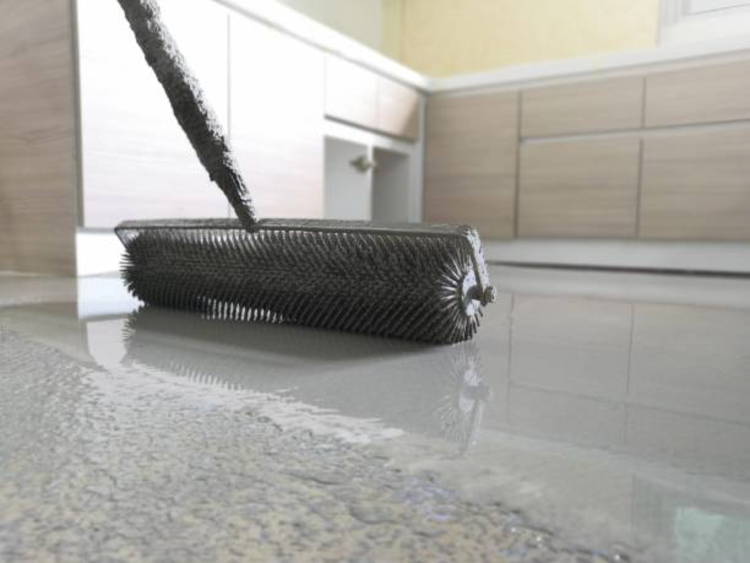 The wear and tear that flooring experiences—from foot traffic, sliding furniture or equipment around, spills, dropped objects and the elements—will start to degrade it in time. This is true even for concrete. Fortunately, you can preserve concrete floors, both indoors and outdoors, with an epoxy floor coating. If you’re considering this project or are on the fence about it, here are some tips for you to think about.
The wear and tear that flooring experiences—from foot traffic, sliding furniture or equipment around, spills, dropped objects and the elements—will start to degrade it in time. This is true even for concrete. Fortunately, you can preserve concrete floors, both indoors and outdoors, with an epoxy floor coating. If you’re considering this project or are on the fence about it, here are some tips for you to think about.
Uses and Advantages of Epoxy
The structure of concrete—a binding material with mineral aggregate suspended in it—is what makes it vulnerable to particular kinds of damage, from staining and moisture seeping in to chemical corrosion of the aggregate or cracks formed by expansion and contraction. Epoxy can protect against many forms of concrete damage by forming a sealing layer over the surface. The epoxy layer keeps water from seeping into the concrete, helping prevent stains and water-related damage. It’s also resilient against many other forms of damage—abrasion, corrosion, impact, cracking and peeling. Some epoxies are useful for decorative floors as well, preventing scratches, stains and skid marks from marring the surface while adding an attractive glossy finish.
Types of Epoxy Coating
Epoxy coatings can be categorized by the carrier fluid used, which affects the application process. Prior to application, epoxy consists of monomer resins suspended in either water or an organic solvent, though some epoxies are 100% solids, with no carrier fluid for the resins. Solvent-based epoxy, the first type to be developed, spreads easily and produces a glossy, highly durable and chemical-resistant coating. The solvent is highly volatile, though, and the resulting fumes are toxic and flammable, limiting its usage. Water-based epoxies have minimal volatile compounds and are easy to apply in a thick or thin layer, though it requires recoating more frequently. Solid epoxy coatings can be more difficult to apply because of their higher viscosity and the curing process can be lengthy, but the considerable durability makes them popular for industrial use.
Preparing Your Floor
A proper epoxy coating requires a clean, dry and slightly porous surface. Before application, prepare the concrete floor by cleaning the surface and patching up cracks and chips wherever possible. Any dirt, debris or grease will be trapped under the epoxy, making it hard to remove if not ruining the coating. Make sure the concrete has not already been sealed or polished. Test by pouring a small amount of water onto the concrete to see if it soaks in. The epoxy should come with a hardening agent, which you must mix into the epoxy before application. Depending on the product, you may want to apply primer first to ensure a strong seal.

